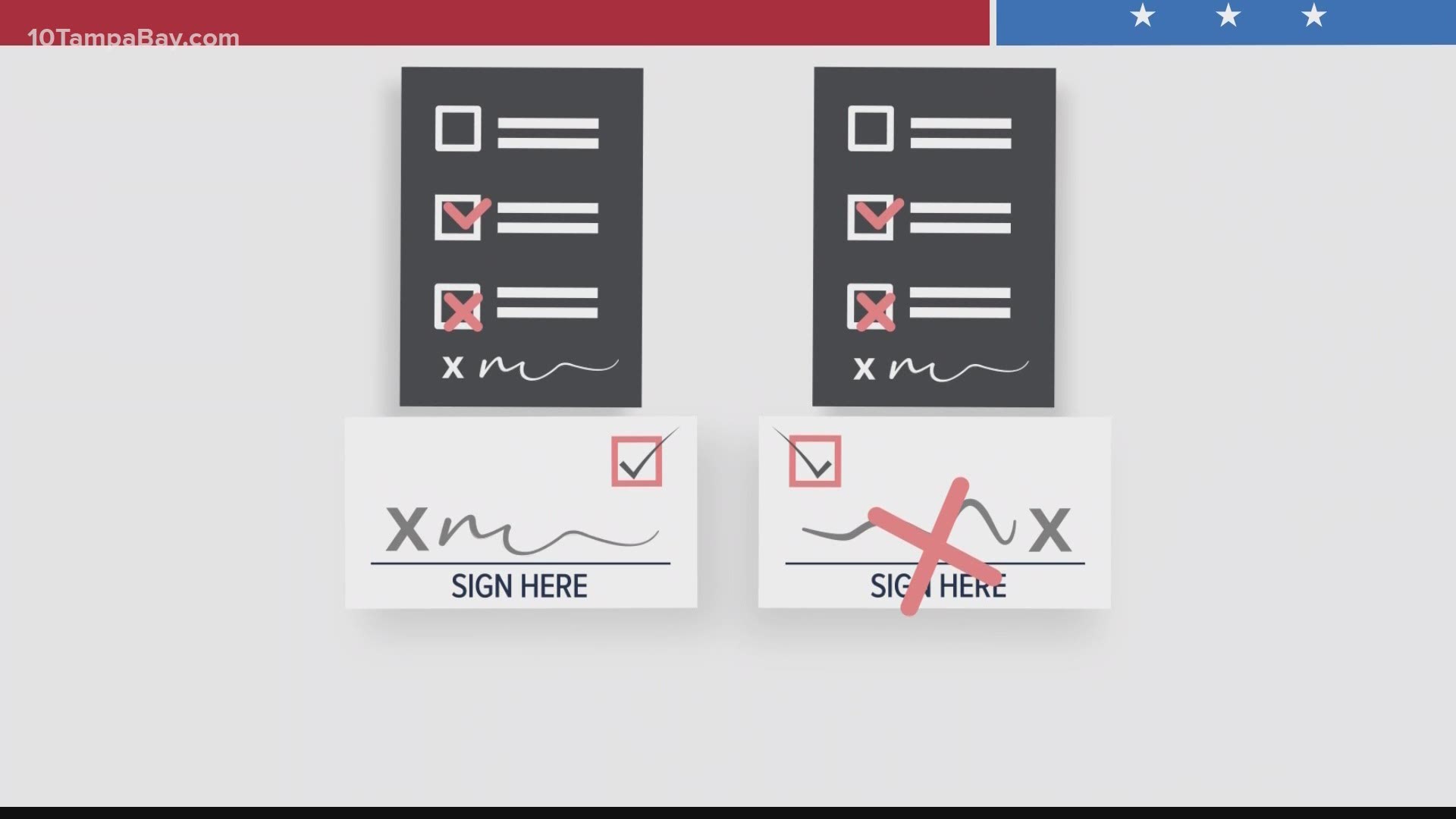ST. PETERSBURG, Fla. — Every four years, it seems history repeats itself: “This is the most important election of our lifetime!” It may or may not be true, sure, depending on how you feel.
But this point is true: Every voter who casts a ballot wants to make sure their voice is heard, and no one wants their ballot to be rejected.
Voting by mail is predicted to become one of the more popular ways of voting during the 2020 presidential election because of the coronavirus pandemic. It’s safe – a voter doesn’t have to interact with another person – and secure.
There is no evidence supporting the idea that mail-in voting increases fraud because there are safeguards in place that make it difficult to impersonate a voter or steal ballots, according to the Brennan Center for Justice at New York University.
Some of those added protections, however, could cause your ballot to end up being rejected. Here’s what to know and how to avoid it:
Request your ballot early, and get it in early
First up, if you have not registered to vote in Florida, you can do so on the state’s website at RegistertoVoteFlorida.gov. The deadline to register is Oct. 5. It’s also a good idea now to go there and check in on your voter registration status.
People who choose to vote by mail in Florida will receive their ballot no earlier than Sept. 24 and even afterward, there’s still time to register to vote by mail if you choose, according to the Division of Elections. The deadline to request a vote-by-mail ballot is Oct. 24.
The timeline is slightly different for absent stateside and overseas uniformed service members, as well as overseas civilian voters.
Voters are encouraged to send in their completed ballot as soon as received, meaning if you get your ballot in late September, have a plan to get it counted as soon as possible.
A vote-by-mail ballot needs to be returned and received no later than 7 p.m. local time on Election Day (Nov. 3, 2020) to be counted, according to the state. Amid reports of slowdowns in mail processing times by the United States Postal Service, it’s recommended ballots be mailed back at least one week before Election Day (That would be Oct. 27).
Want to skip the mail entirely? Vote-by mail ballots can be returned at secure drop boxes at counties' supervisor of elections' offices and early voting sites.
According to the Stanford-MIT Healthy Elections Project, about 1.34 percent of all vote-by-mail ballots cast in the March 2020 presidential primary – 18,504 ballots of a total of 1,361,438 ballots – were rejected after the 7 p.m. Election Day deadline or another reason.
Signature verification
Before sending off the vote-by-mail ballot, you must sign the envelope. That signature is compared with the one on record with the state; and if it doesn’t match, it could be rejected.
But a county supervisor of elections is required to notify a voter their signature is missing or does not match. A “vote-by-mail ballot cure” affidavit form will need to be filled out and sent in, along with additional identification, no later than 5 p.m. on the second day after Election Day.
Read the ballot instructions
If you have a question about the ballot at the polls, it’s easy to ask a poll worker. If you’re at home, it’s not so easy.
Be sure to follow the directions of filling out the ballot: Fill in the oval completely and use a ballpoint pen with black ink. Leave no other marks.
On the envelope, be sure to read how to properly seal it and sign where applicable.
Reach out to your local supervisors of elections office with any questions as soon as possible.
►Breaking news and weather alerts: Get the free 10 Tampa Bay app
►Stay In the Know! Sign up now for the Brightside Blend Newsletter

